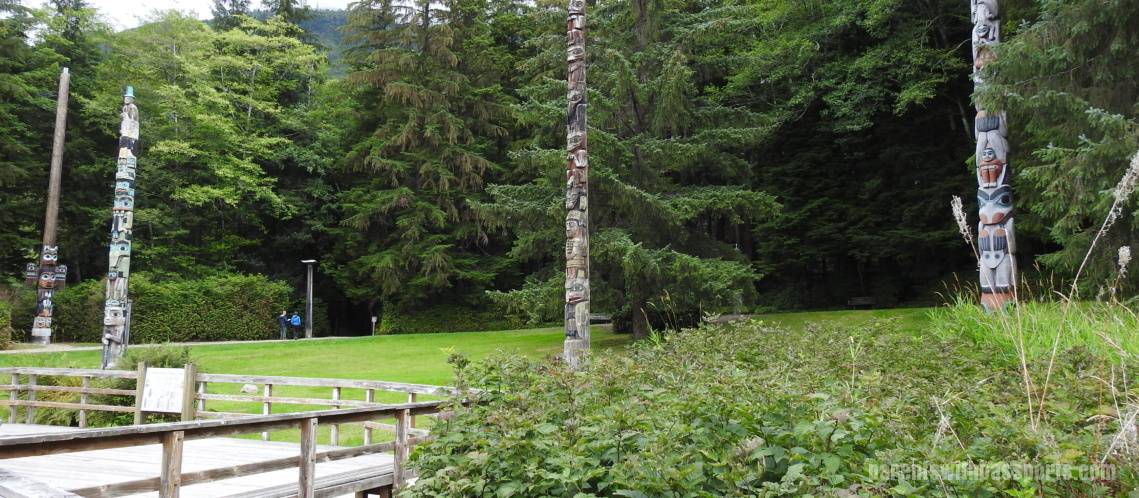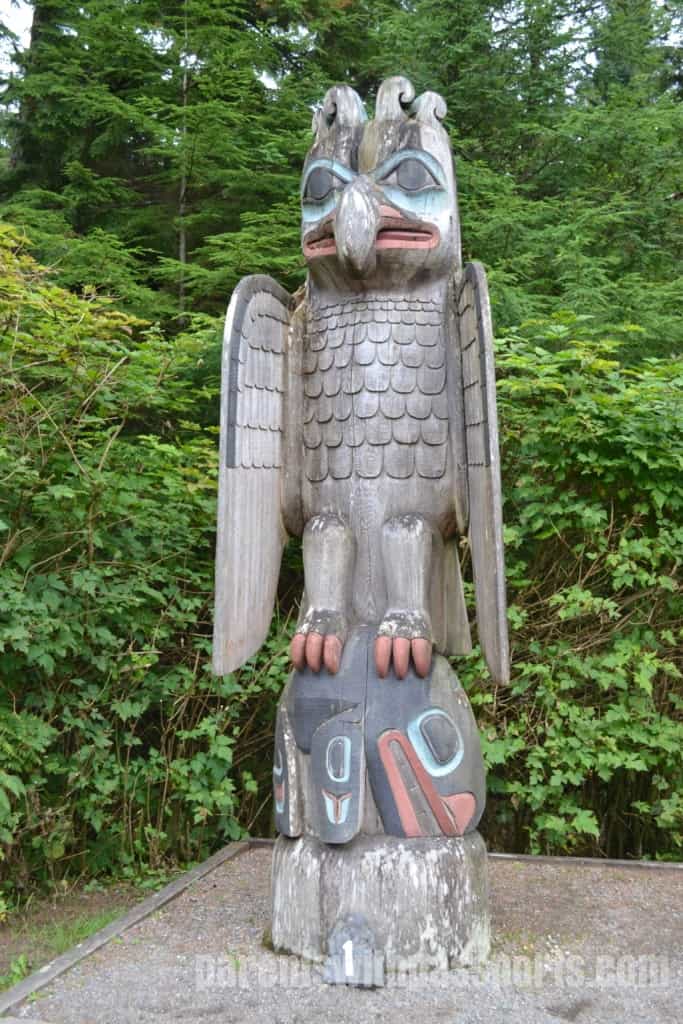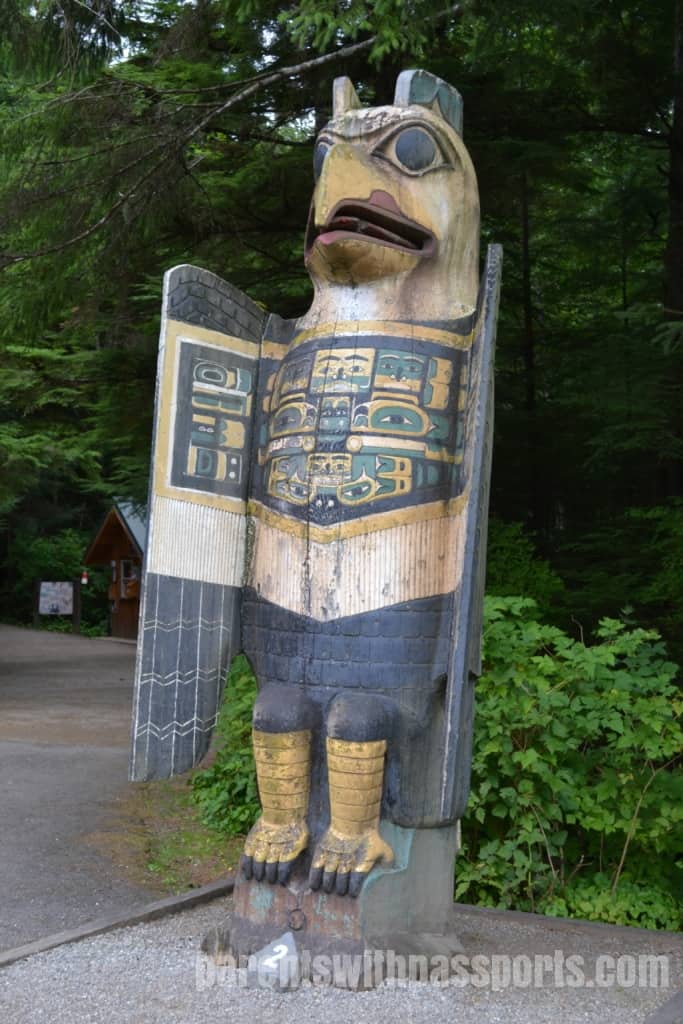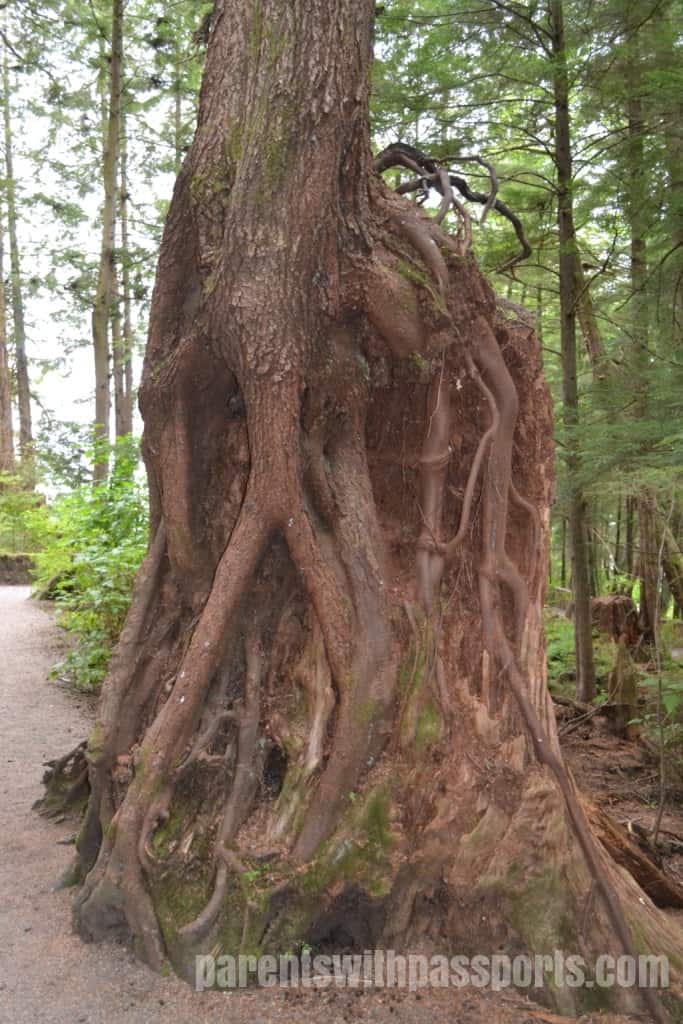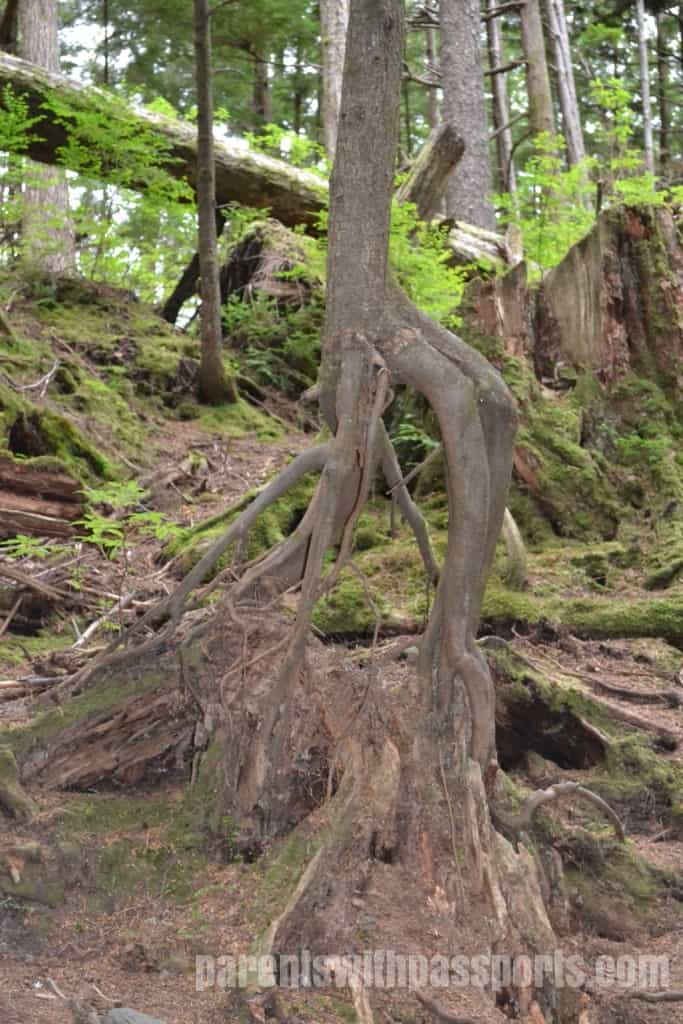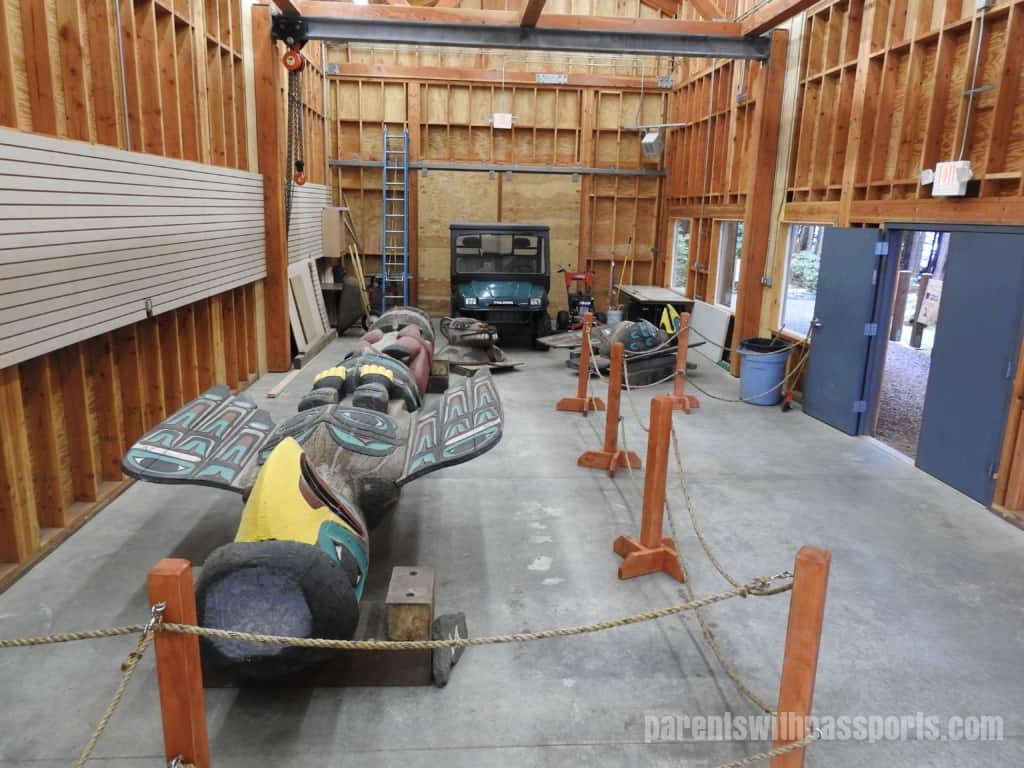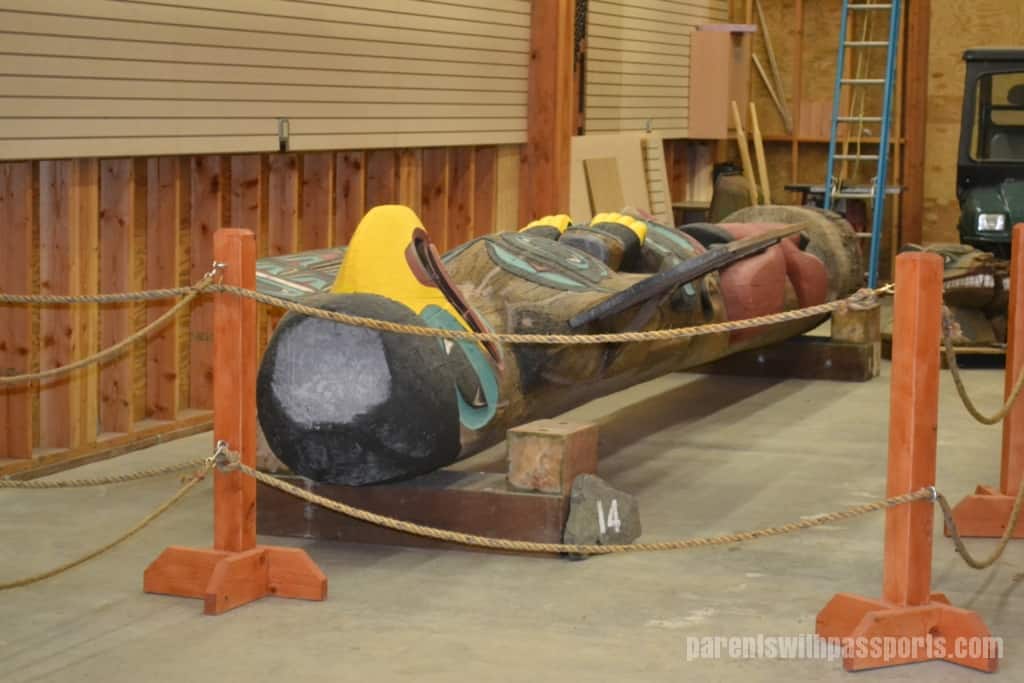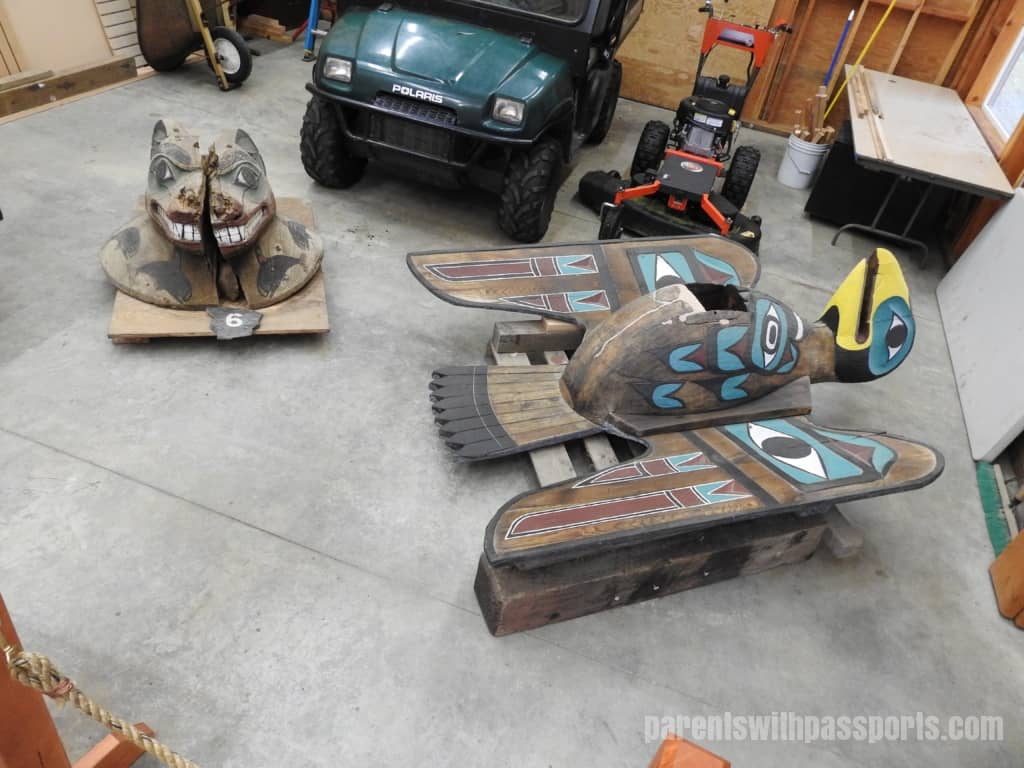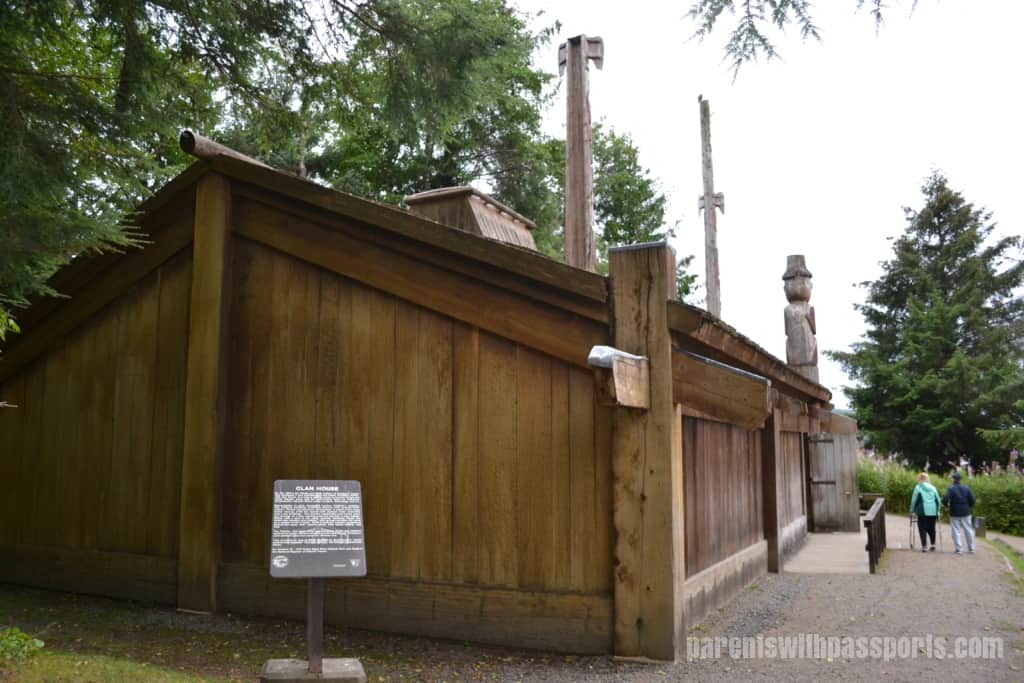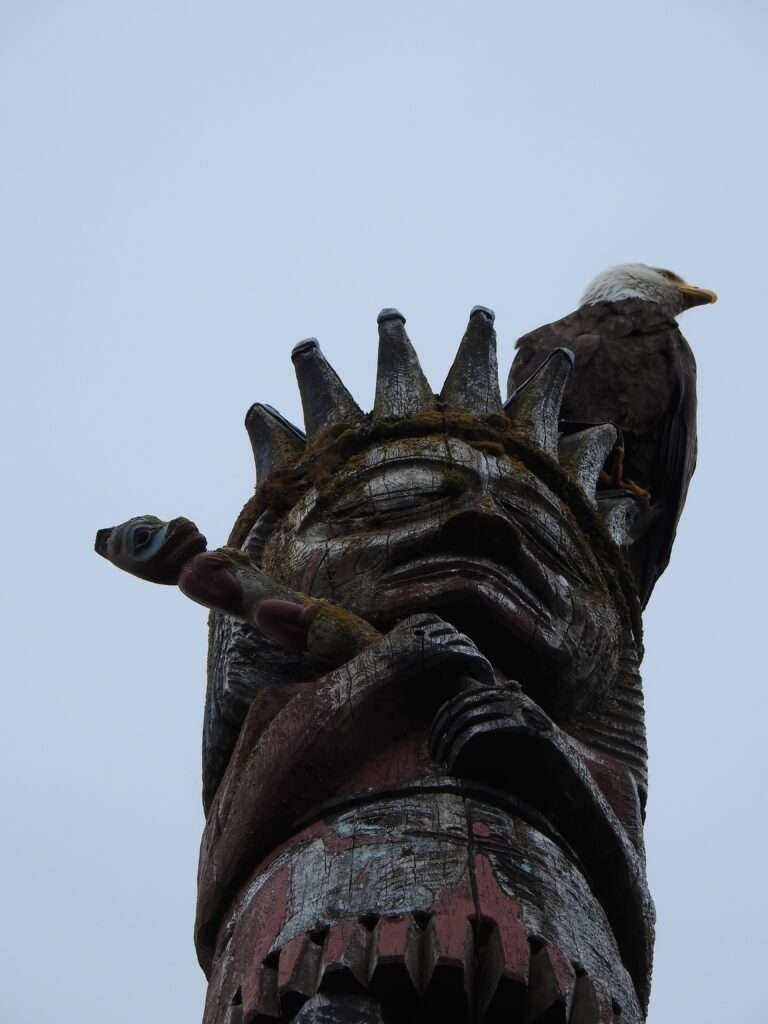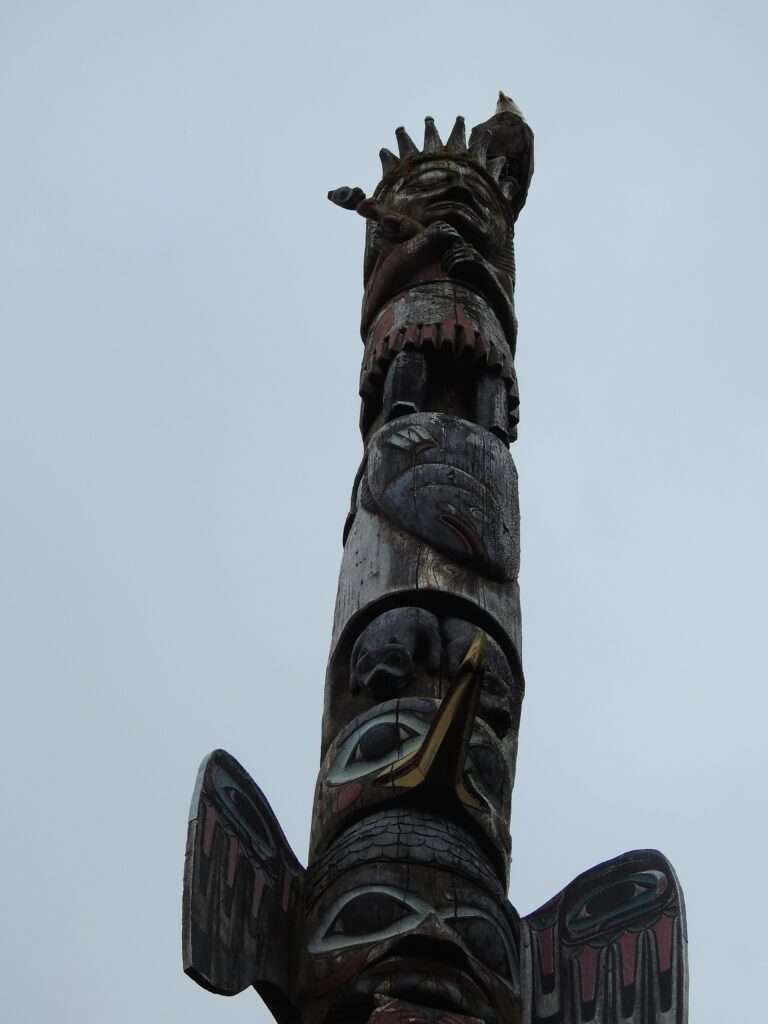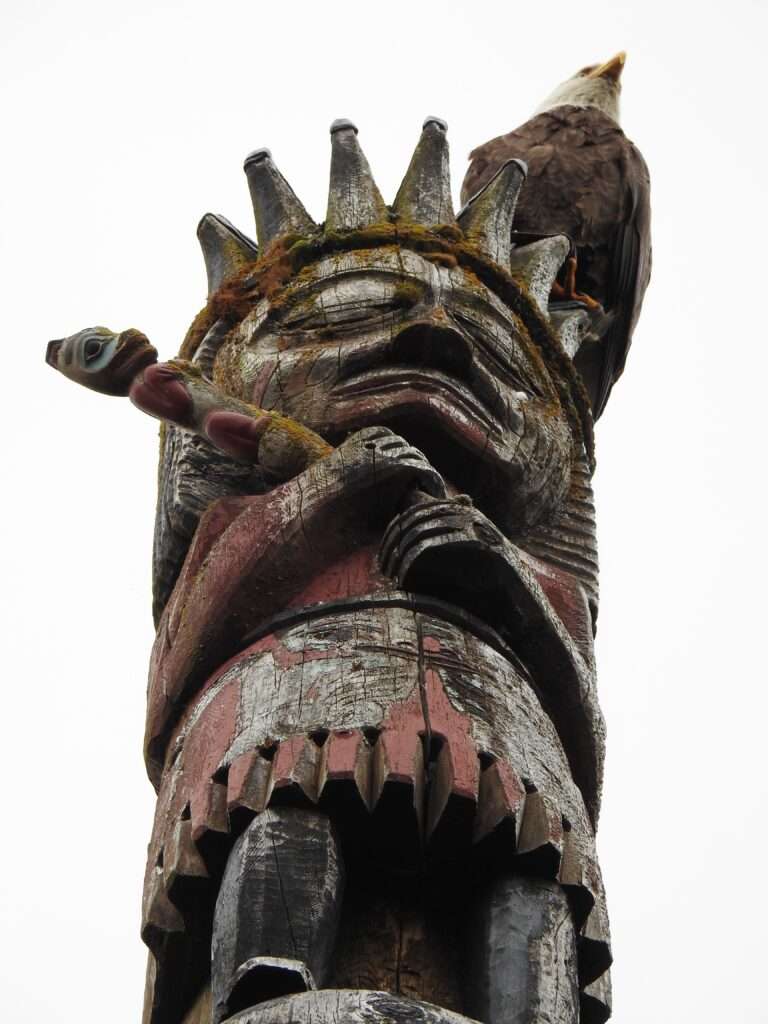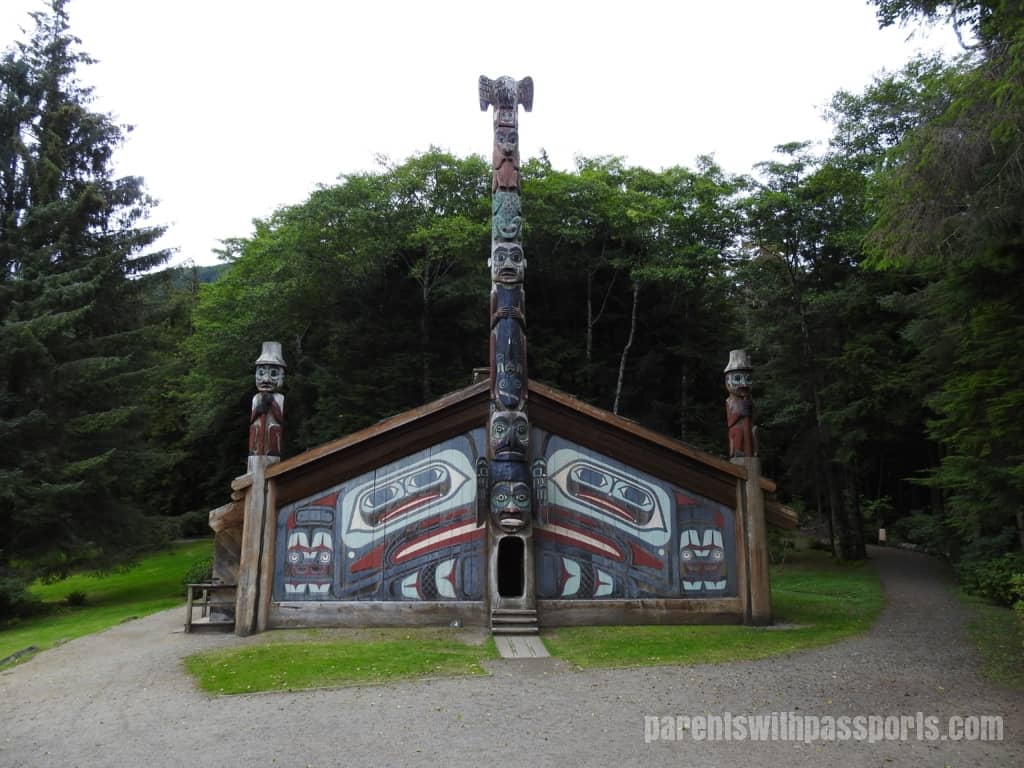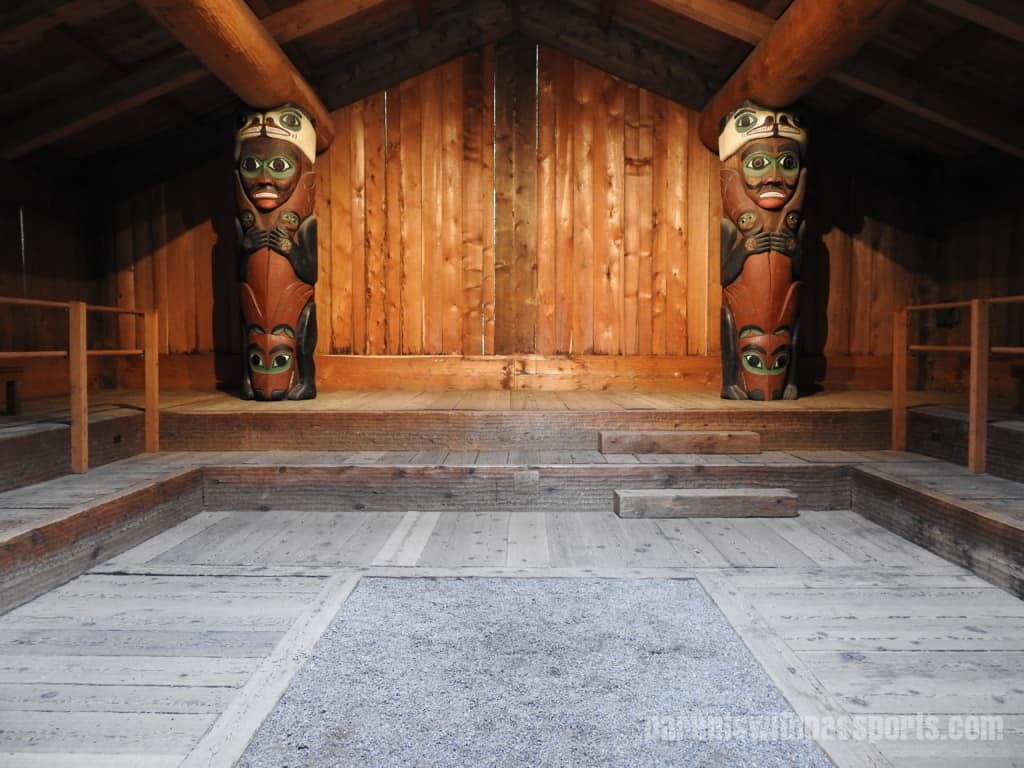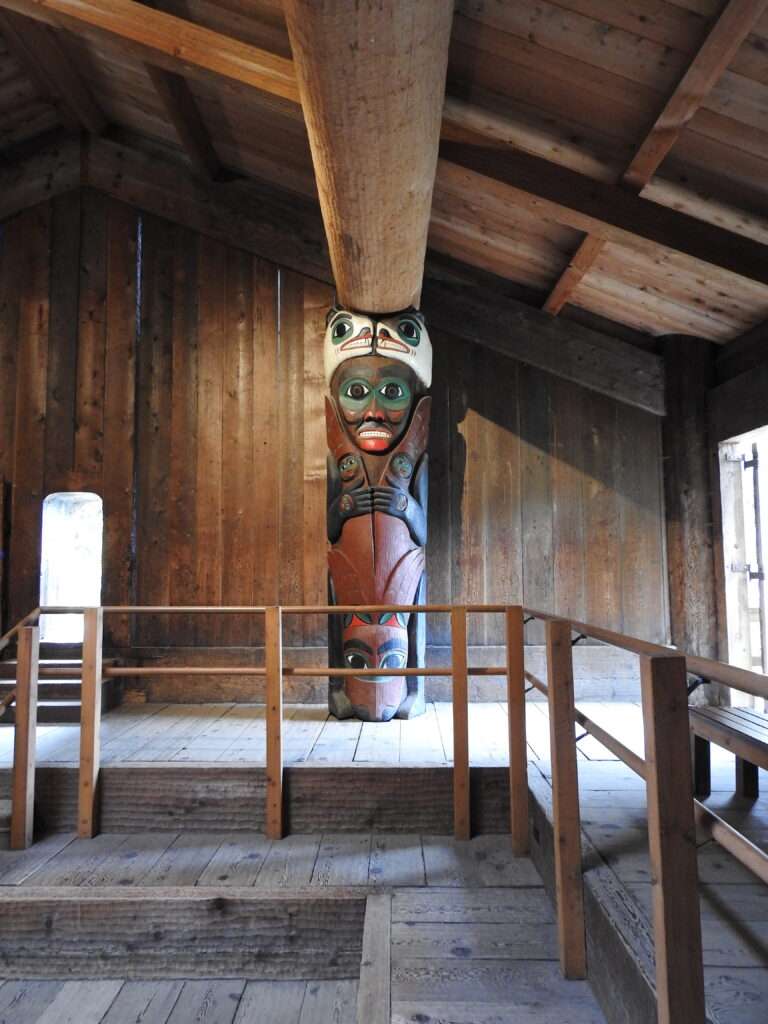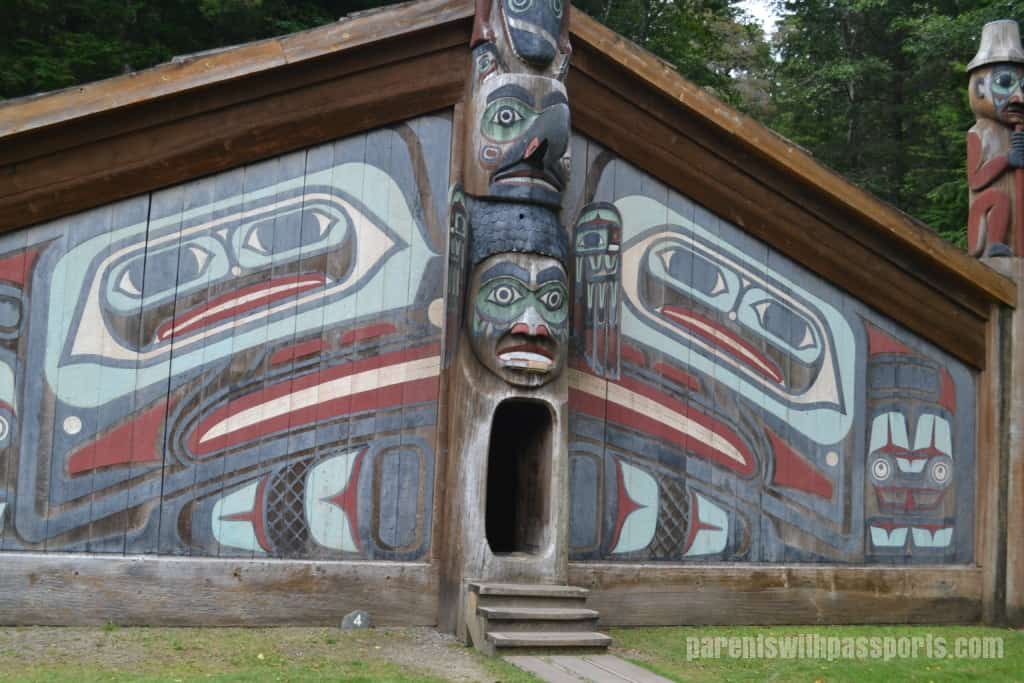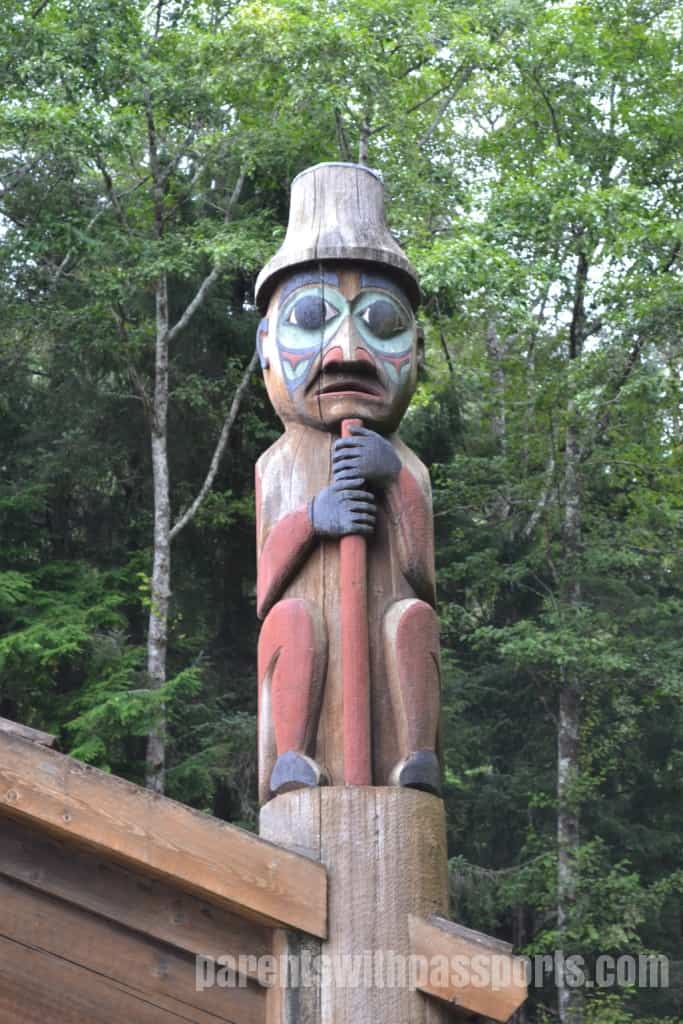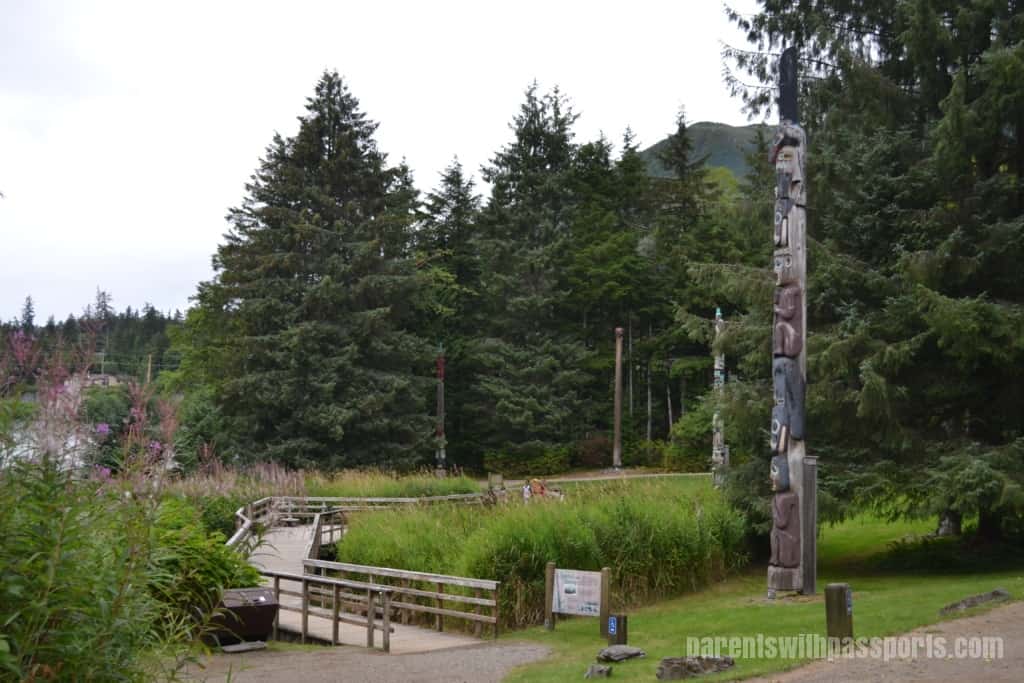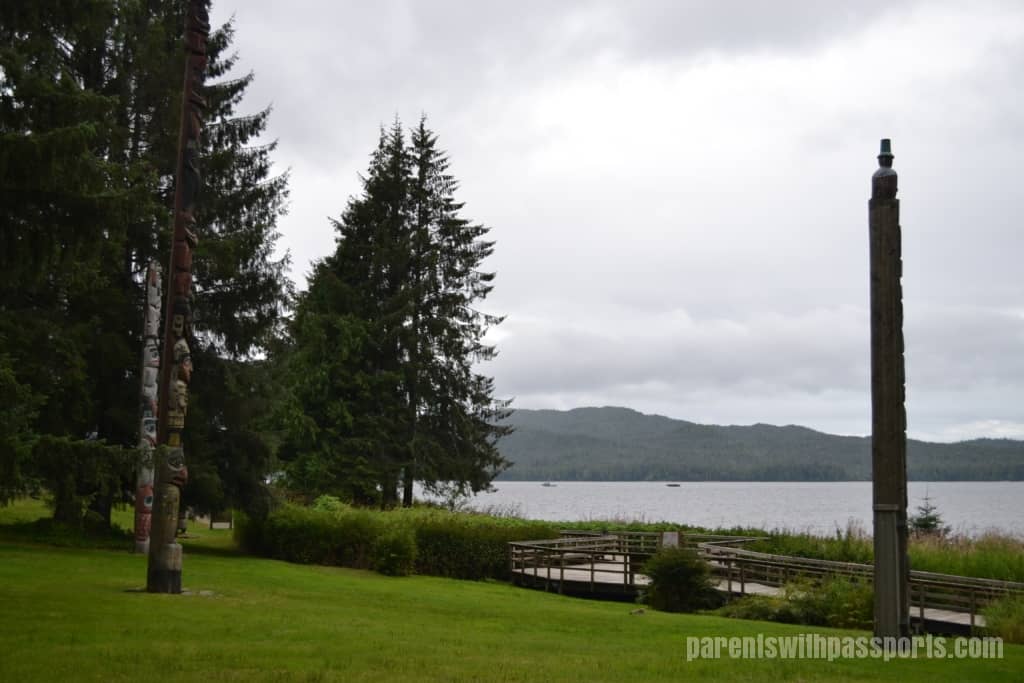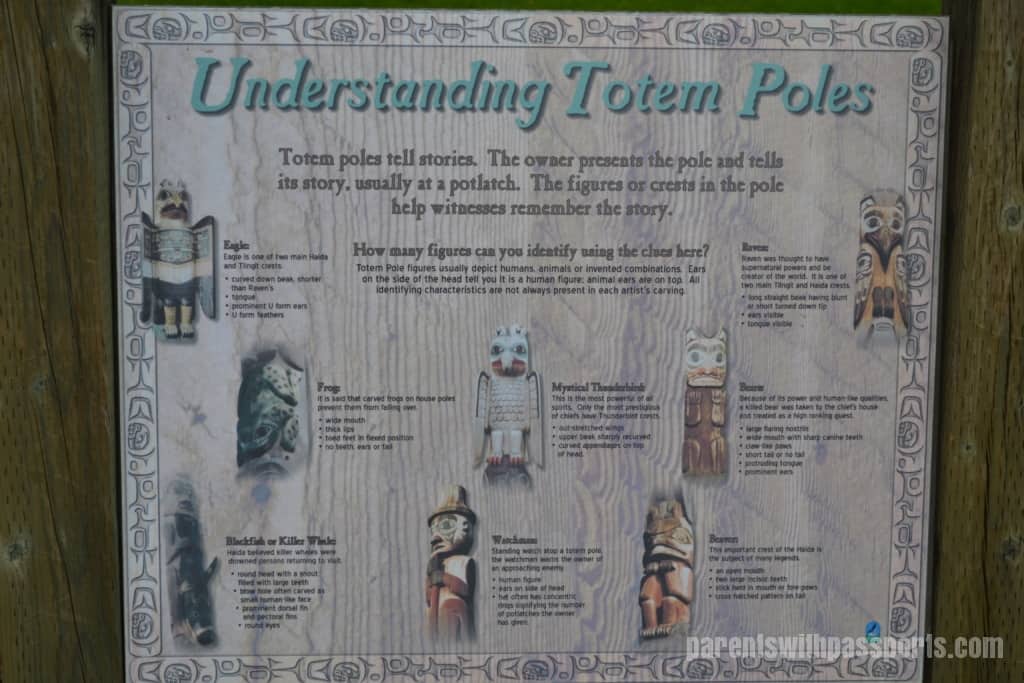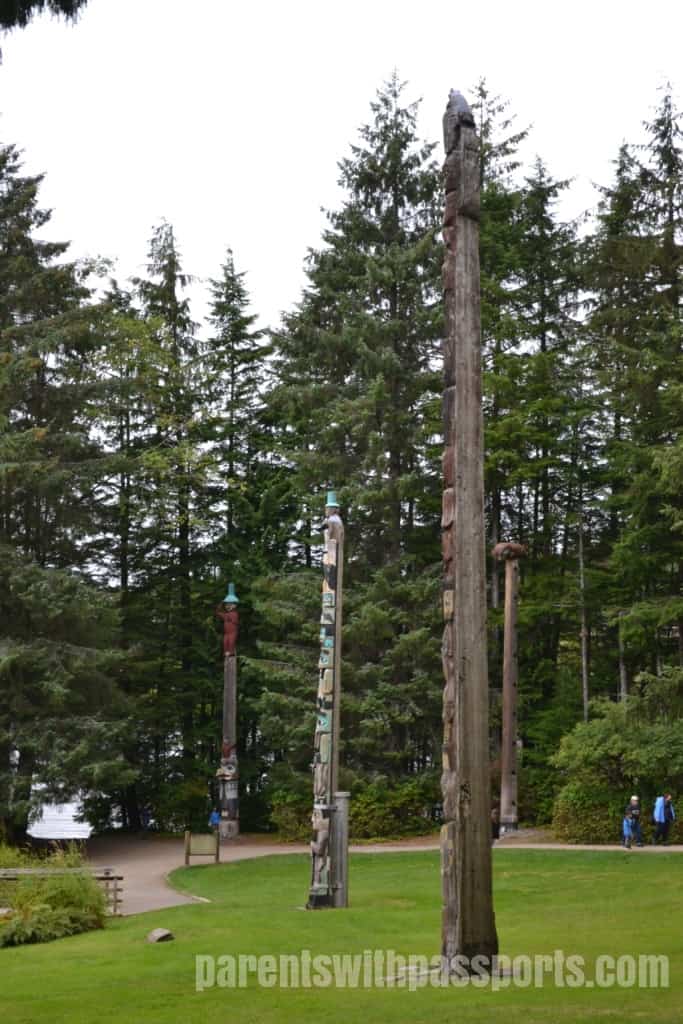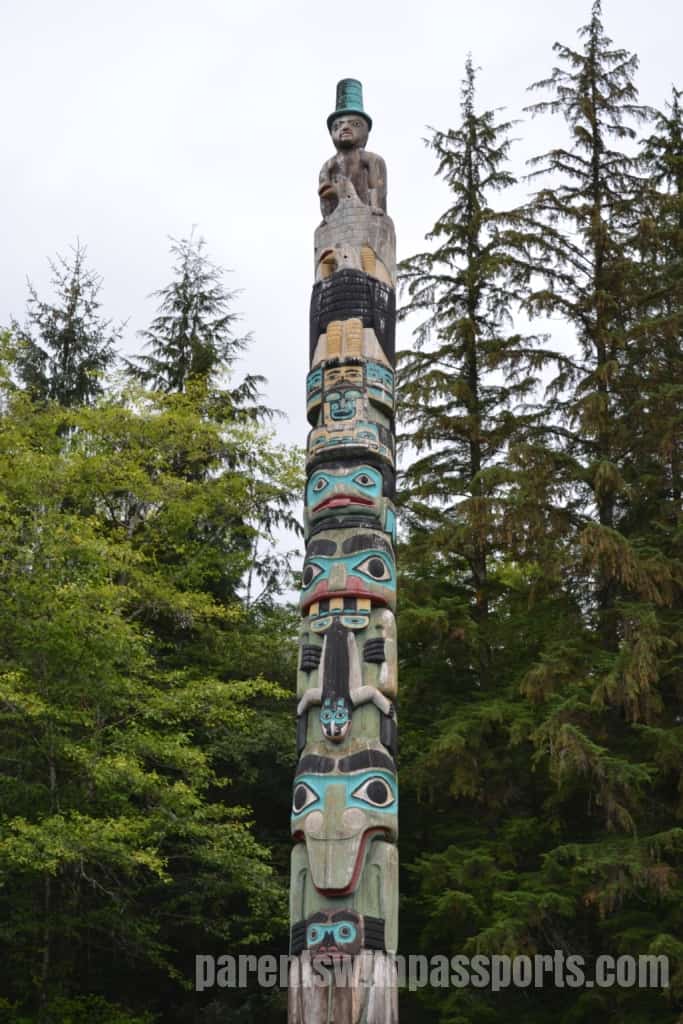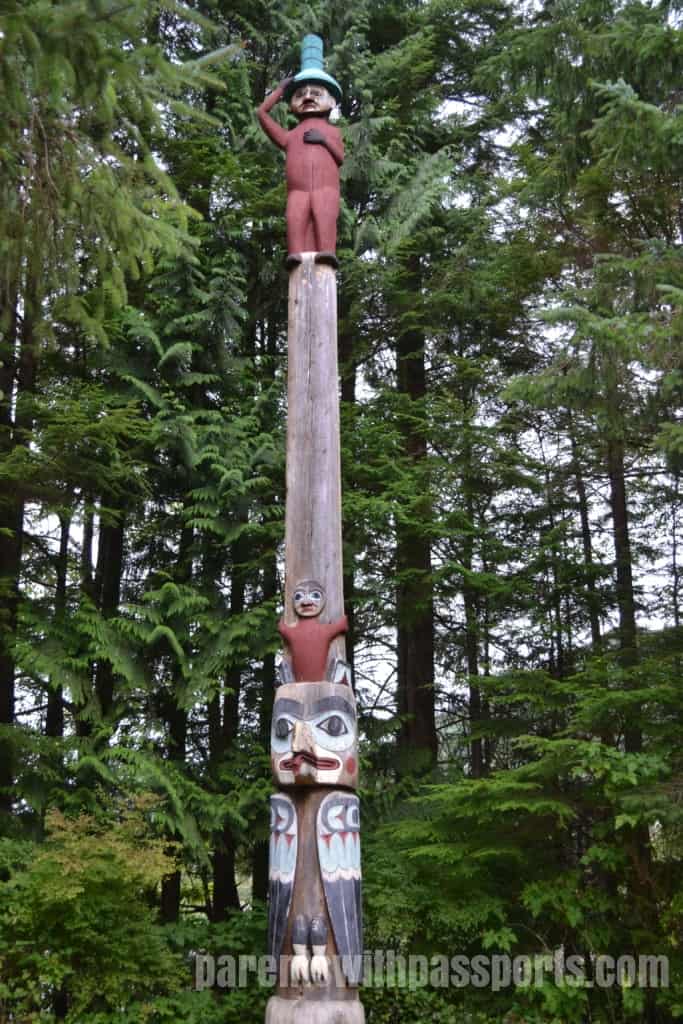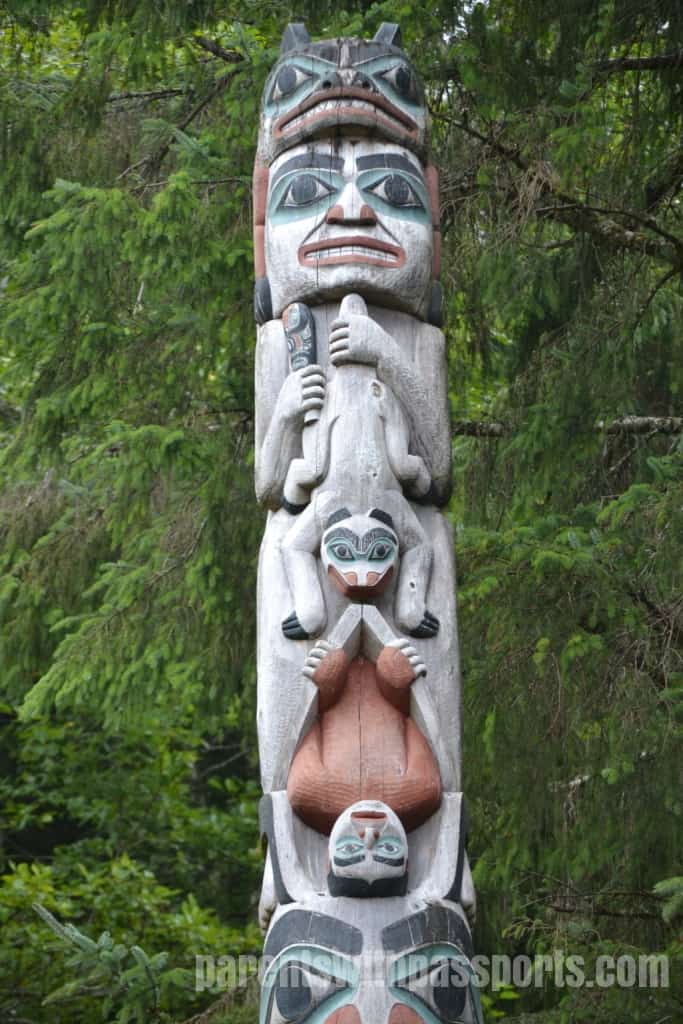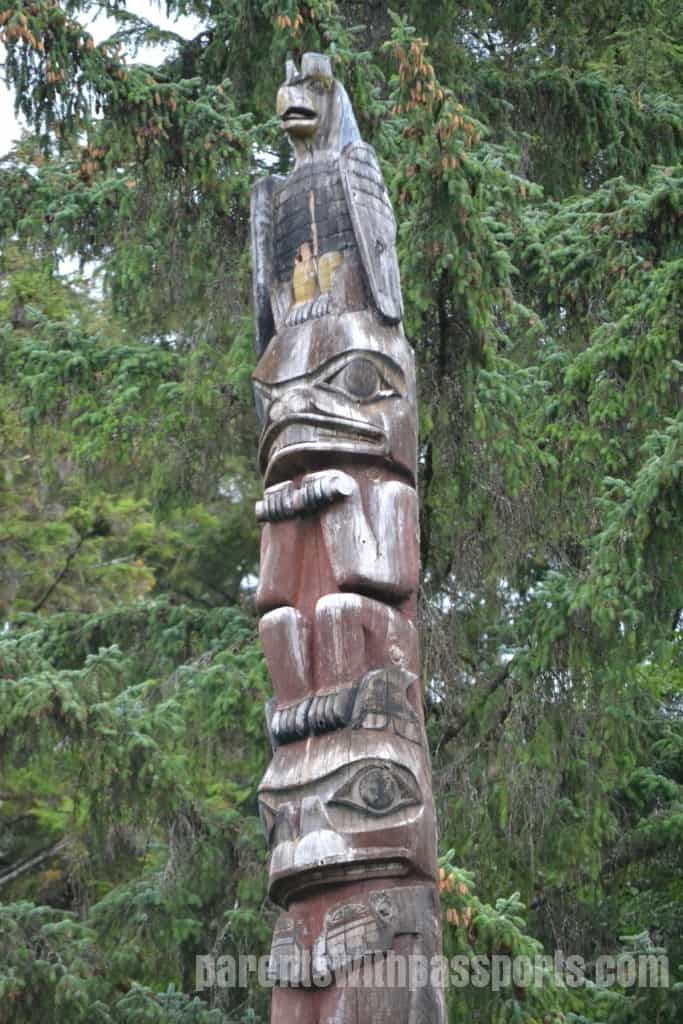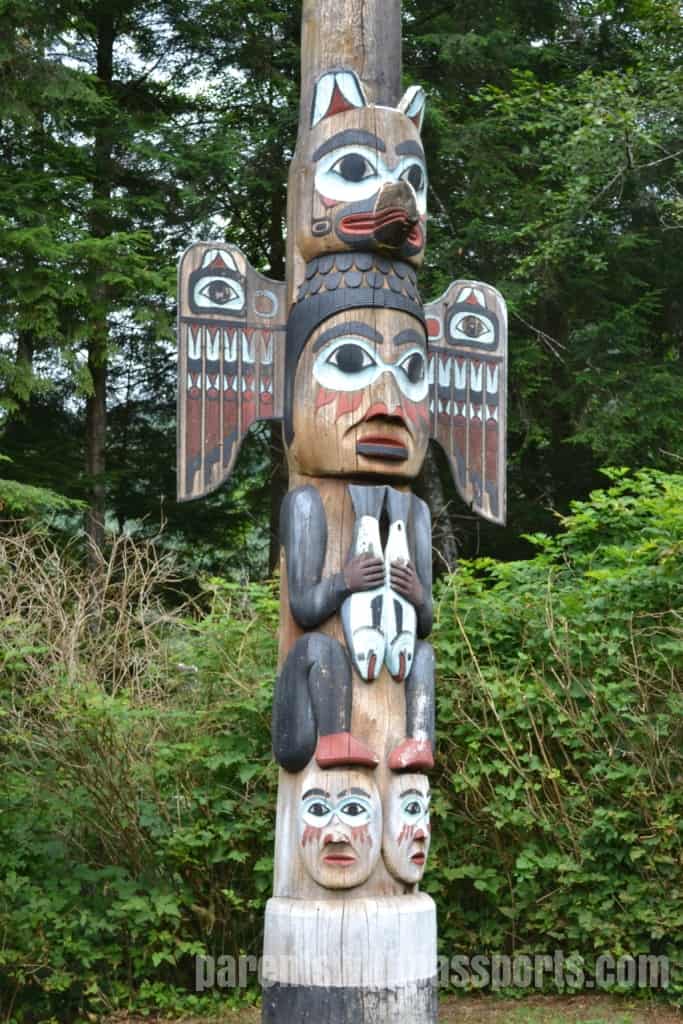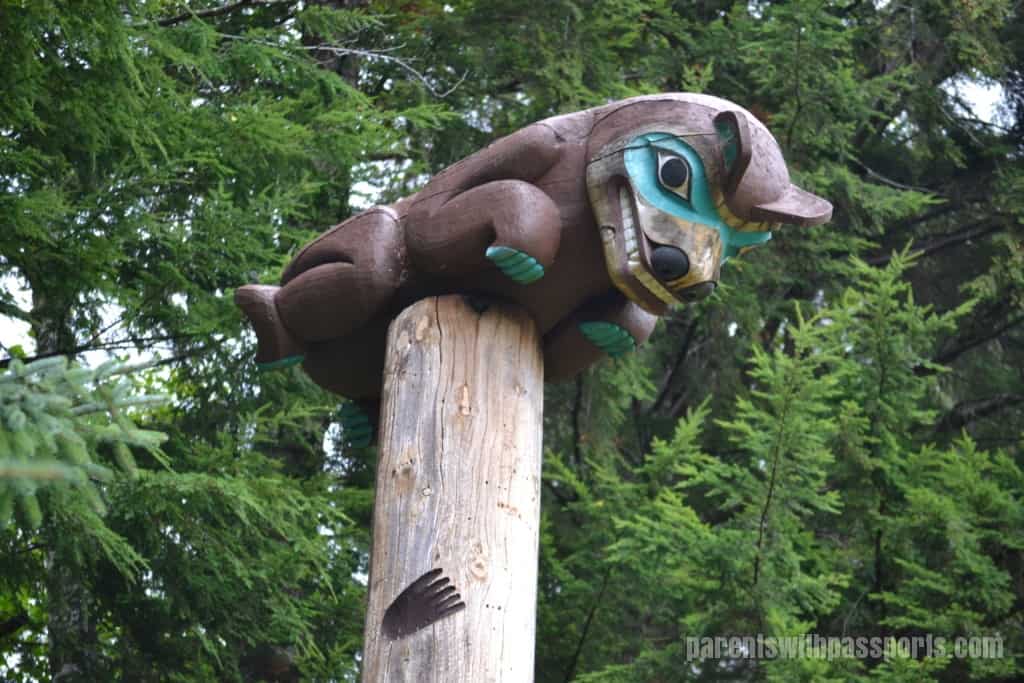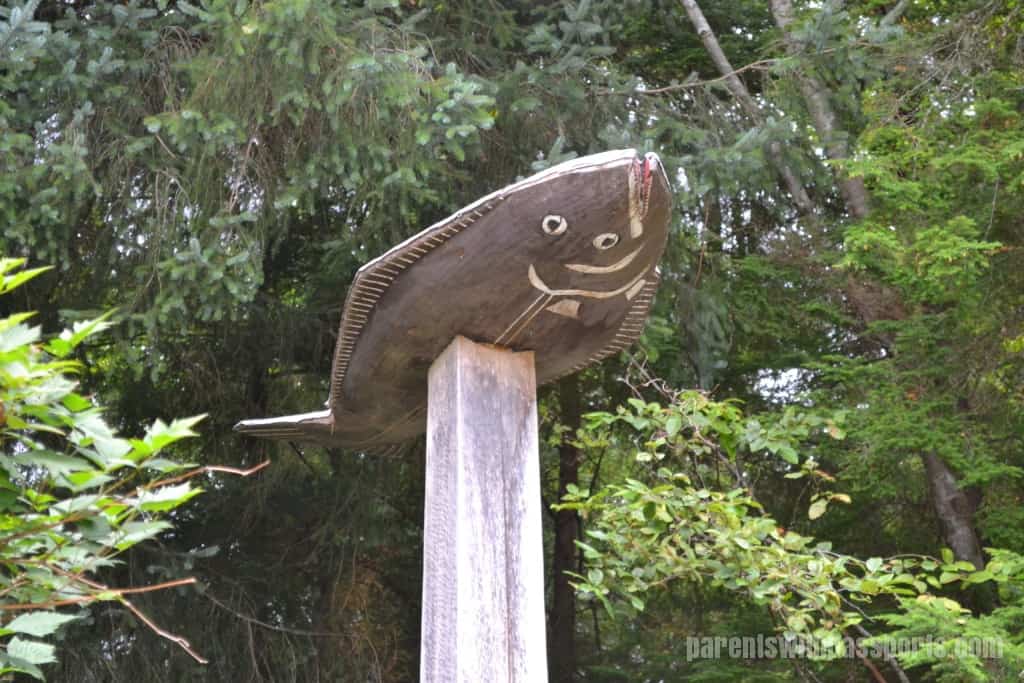The final stop on our Ketchikan excursion was Totem Bight State Park. Situated on 11 acres of rainforest just north of Ketchikan, this park displays restored and replicated totem poles and a representative clan house.
In the early 1900s, Native Americans were forced to migrate away from their villages, leaving behind totem poles and clan houses to be swallowed up by the woods. In 1938, the US Forest Service began a program to save as many of these native artifacts as they could and to hire Natives to recreate the ones that could not be salvaged. Totem Bight State Park is the result of that program. Totem poles were brought here from abandoned villages to be repaired or recreated, resulting in the 14 totems displayed at the park today.
A totem stood on either side of the entrance to the park. The first is known as Thunderbird and Whale. The bird is symbolic of a storm. The bird’s wings beat to create thunder, while its eyes blink to form lightening. The whale at the base of the totem is symbolic of the mountaintop on which the bird lives.
The second totem is Eagle Grave Marker. This replicated totem features unique artwork on the front of the eagle. A painting of a Chilkat blanket is spread across the eagle’s chest and wings, with images of clouds, mountains, and forest creatures adorning the blanket. This feature was not on the original totem in Hokan village but was added by artist John Wallace when he recreated it.
Following the path between the two totems, we headed down a trail through the rainforest. We saw some cool trees along the path with buttress roots that stood tall above the ground. Due to poor soil quality in the rainforest, trees typically have shallow root systems in order to pull nutrients from the richer top layer of soil. As trees grow taller, their shallow roots cannot support the tree so they have adapted to grow buttress roots above ground for additional support. Sometimes waters can wash away the soil in between the roots, creating the effect of tree legs seen in the second pictures below.
We continued our walk and came to the Totem Restoration Building. It reminded me of a hospital for wounded totem poles. Four totems were carefully laid on platforms to be repaired. The two most severely injured were a head split in half and a raven with a hole in its chest. It was impressive to see the care that is taken to maintain these beautiful works of art.
From there we came up from behind the clan house to get to the main part of the park. My eagle eye youngest spotted something sitting high on top of one of the totems. Can you see it?
No, that is not an eagle carving at the top of the totem pole. It is an actual bald eagle! It was so cool to see one up close. He perched himself up there for the entire length of our visit, just surveying the scene below.
We stood at the base of the Pole on the Point for a while, watching the eagle while Natalie taught us about totems and clan houses. The clan house at Totem Bight is a replica of the early 19th century houses found in Tlingit and Haida villages.
Thirty to fifty people would have lived in a clan house of this size. The inside is a single, large room with an elevated platform surrounding a central area. Several families from the same lineage would live here, each given its own space around the platform. The central space was for a shared fire.
On either end of the room, there are two carved figure posts. Beams sit upon their heads, spanning the length of the room and providing support for the roof. The four posts are identical and feature the carved character of Duk-toothl. Wearing a weasel skin hat, the man is tearing a sea lion in half to demonstrate his great strength.
It was really interesting to see the inside of a clan house and imagine 30-50 people living there. Despite being just one large room, there were a lot of interesting design features. The doors were purposefully small to make it harder for enemies to attack. Intruders would have to come in head first, which made them more vulnerable and allowed the inhabitants inside to quickly protect themselves. There were no windows in the clan houses, but a smoke hole was made in the middle of the roof (protected on the exterior by a plank screen) to let smoke from the fire out and fresh air in.
On the exterior, there is a central post and two corner posts at the front of the house. Both the central post and the painting on the front of the house depict ravens, one of the two Tlingit moieties (descent groups). Paintings like this on the front of clan houses were uncommon and reserved for the very wealthy. The two corner posts on the outside of the house are village watchmen. Wearing a spruce hat and holding a cane, they appear ready for a potlatch, a Tlingit ceremonial feast.
After exploring the clan house, we headed to the main area of the park where there are 10 totems displayed in a large clearing. A boardwalk connected the two parts of the park with a pretty vantage point to the water. This was the one day on our trip where the weather never cleared so visibility was low, but I imagine the view would have been gorgeous on a clear day.
The boardwalk had some great informational signs, including this one which identified the different figures used on the poles and their significance and key features.
After Natalie finished talking to us about the totems, she gave us some time to just wander around and appreciate their artistry. It was neat to be able to get so close to them and see the intricate details. The 10 totems in this area are listed below:
- Pole on the Point – a shaman in ceremonial garb with his spirit aides, a halibut and two land otters
- Blackfish Pole – tells the story of the origin of the blackfish (killer whale), which was brought to life through carving
- Land Otter Pole – figure holding a club in one hand and the tail of an otter in the other
- Master Carver Pole – crests of husband and wife with a figure of the master carver on the bottom
- Sea Monster Pole – watchman sitting above a mythical sea monster
- Raven at the Head of Nass – the chief from whom the Raven stole daylight
- Kat’s Bear Wife – bear and tracks, symbolizing the grizzly bear hunter’s wife
- Kadjuk Bird Pole – Kadjuk bird atop an undecorated section of pole, symbolic of the high esteem in which it was held
- Halibut Pole – honors the Halibut House people of Nexadi clan
- Thunderer’s Pole – depicts brothers known as Thunderers, who can create thunder and lightening
By this point in our trip, we had seen a lot of totem poles (both in Vancouver and in other stops in Alaska) and I was afraid the kids might be bored. But they really seemed to enjoy it. We got a lot of great information from Natalie, and the clan house was something new and different for them. Plus the setting was beautiful. We really enjoyed this stop on the tour.
